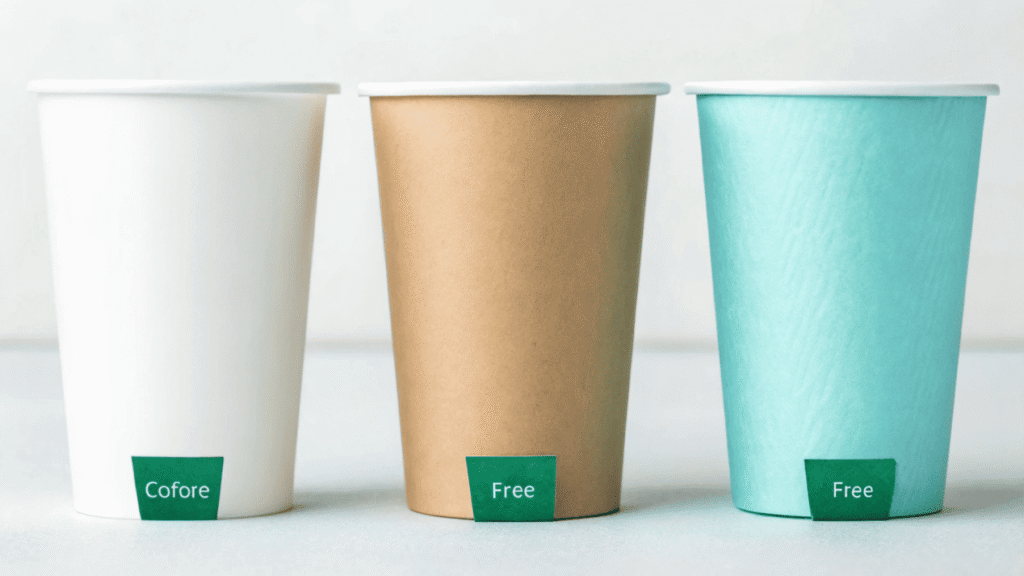You think your paper cup is just paper. But without a hidden inner layer, it would turn to mush. This unseen coating determines if your cup is truly eco-friendly or just greenwashing.
A paper cup's waterproof ability comes from an inner coating. The three main types are PE (plastic), PLA (bioplastic), and Water-Based. This choice dictates the cup's health impact and recyclability.
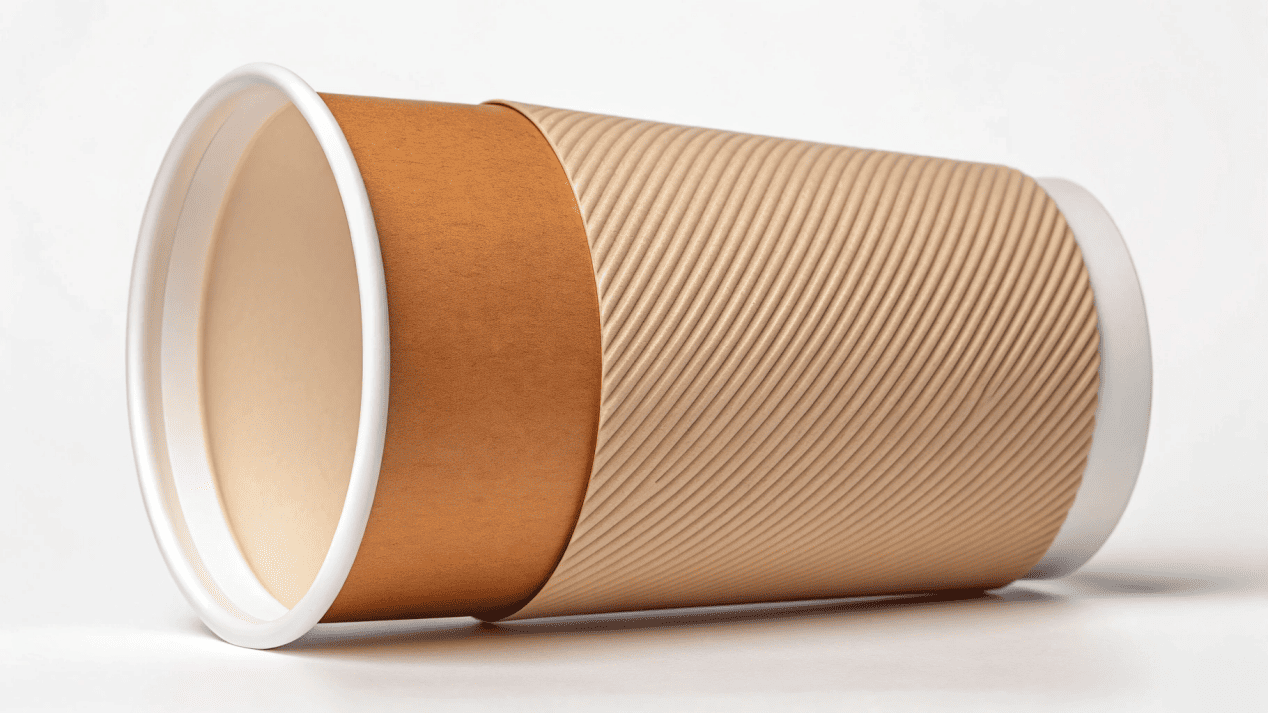
I once had a client who was so proud to switch her cafe to "compostable" PLA cups. She thought she was doing the right thing for the planet. I had to ask her the tough question: "Do you know where the nearest industrial composting facility is?" She had no idea. In her city, there wasn't one. Her "eco-friendly" cups were going to the same landfill as all the others. This is the hidden truth of paper cups. As a packaging engineer for over 21 years, I believe you deserve to know what's really in your cup, so you can make a choice that truly aligns with your values.
What Are the Main Types of Paper Cup Coatings?
You see labels like "eco-friendly," "compostable," and "recyclable." But these terms are confusing and often misleading, making it hard to know what you're actually buying.
The three main players are PE (Polyethylene), a standard plastic; PLA (Polylactic Acid), a plant-based bioplastic; and Water-Based Coatings, a next-generation recyclable solution.
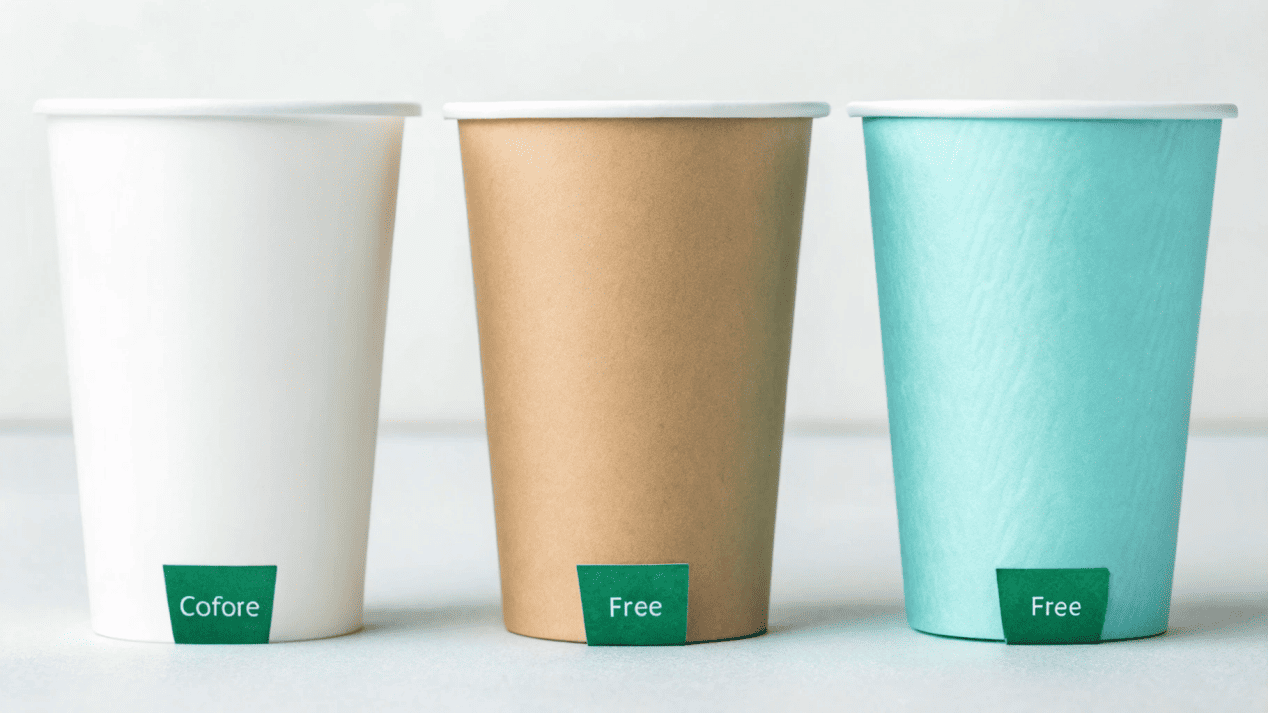
Not all coatings are created equal, and understanding the difference is critical. For decades, the industry relied on one main solution, but now we have more choices. Let's break them down in simple terms.
- PE (Polyethylene) Coating: This is the old industry standard. Think of it as a very thin layer of plastic, made from fossil fuels, that is heat-bonded to the paper. It's cheap and it works, which is why it's everywhere.
- PLA (Polylactic Acid) Coating: This became a popular "eco" alternative. PLA is a bioplastic, meaning it's made from renewable resources like corn starch instead of oil. It looks and feels like plastic, but its marketing tells a greener story.
- Water-Based Coating: This is the real innovation. Instead of fusing a separate plastic film to the paper, a water-dispersed polymer is "painted" on and allowed to dry, creating a waterproof barrier that is integrated with the paper itself. This fundamentally changes how the cup can be disposed of.
Are Paper Cup Coatings Safe to Drink From?
You serve hundreds of hot drinks a day. The last thing you want is to worry that the cup itself could be leaching harmful substances into your customer's beverage.
Yes, when sourced from a certified manufacturer, all three coating types are food-safe. However, emerging research suggests PE-lined cups may shed microplastics when exposed to hot liquids.
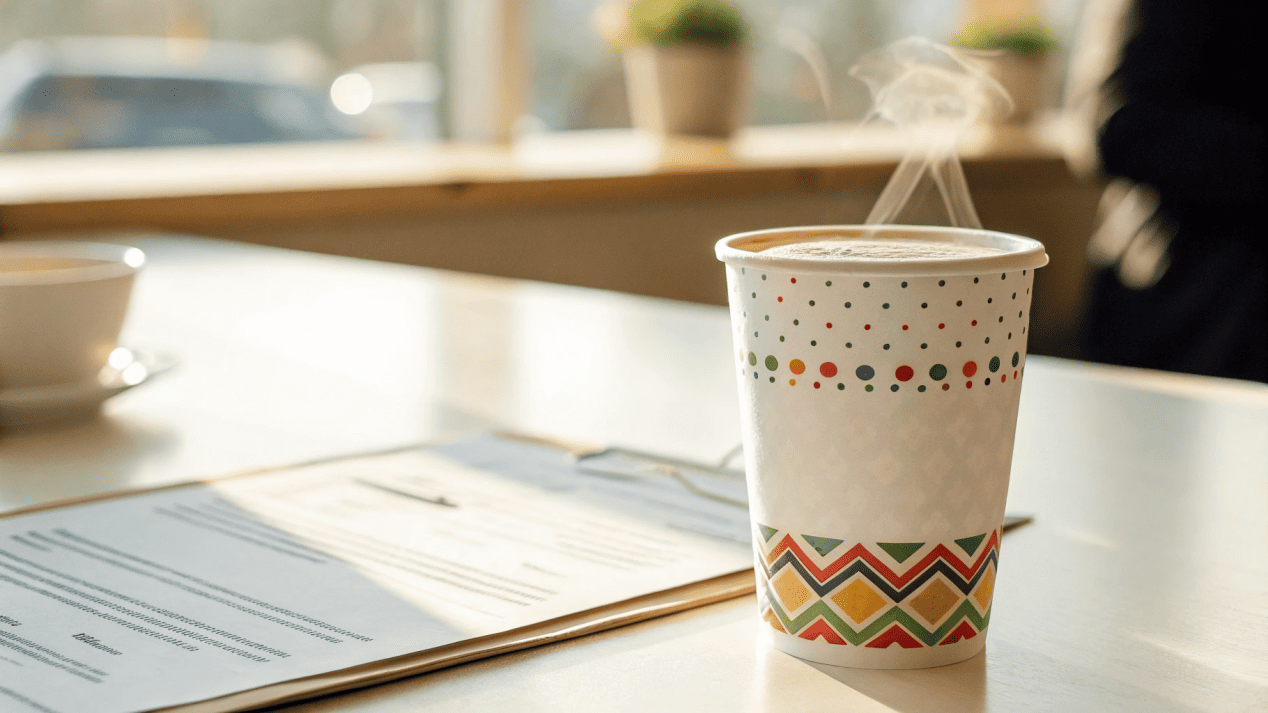
This is a question I take incredibly seriously as a manufacturer. The short answer is yes, they are safe. Reputable companies like ours adhere to the strictest international standards. We are certified by bodies like the FDA, SGS, and BRC, which guarantees our materials are non-toxic and completely safe for direct contact with food, whether it's a hot coffee or a cold soda. We conduct rigorous tests to ensure nothing harmful leaches from the cup into the drink.
However, the conversation is evolving. In recent years, scientific studies have raised concerns about PE-lined cups. Research has shown that when hot liquids are poured into these standard plastic-lined cups, they can shed a large number of microplastic particles. While the long-term health effects are still being studied, this possibility is a major concern for many consumers and brand owners. This is driving a strong demand for genuinely "plastic-free" alternatives, like our water-based coatings, for complete peace of mind.
Why Can't Most Paper Cups Be Recycled?
You put your used paper cup in the recycling bin, feeling good about your choice. But you're unknowingly contributing to a massive global problem because the cup is likely headed for a landfill.
Because the PE or PLA plastic liner is fused to the paper, standard recycling plants cannot separate them. This contamination means the vast majority of paper cups are rejected and sent to landfill.
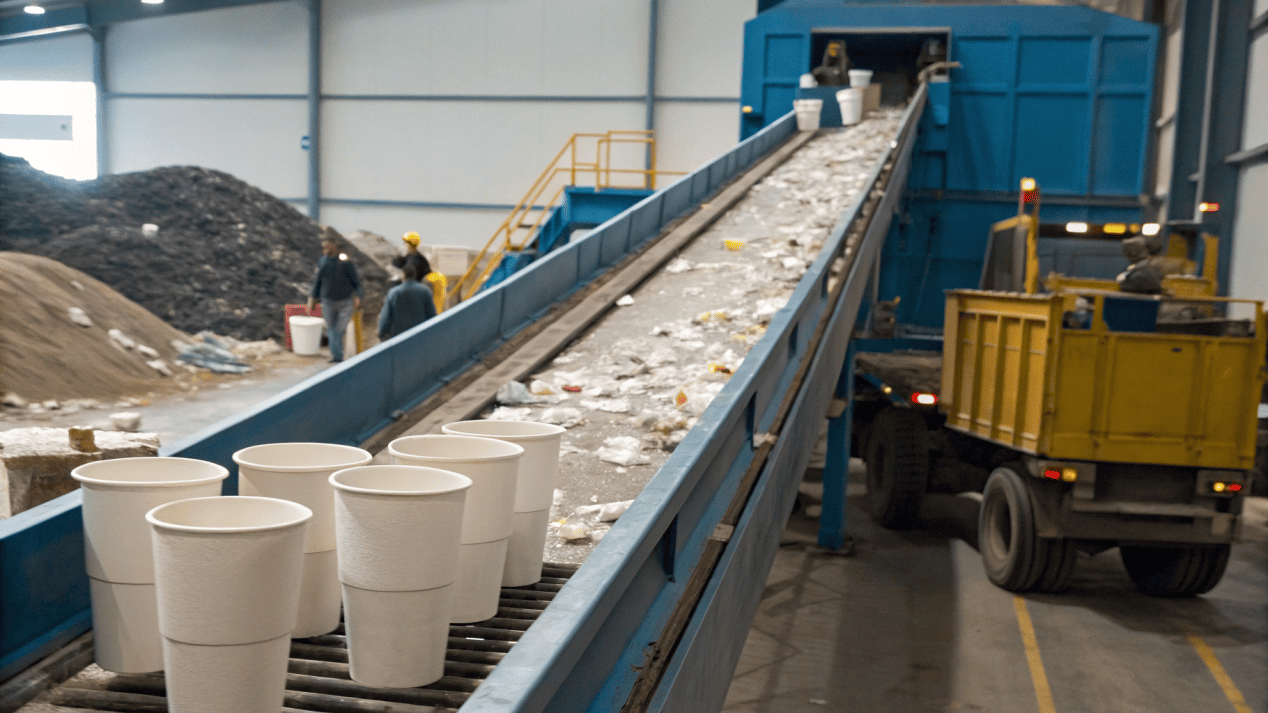
This is the billion-cup problem. The plastic film inside most cups is the villain in this story. Imagine trying to separate the egg out of a cake after it has been baked. That's what recycling facilities face with PE and PLA-lined cups. The plastic is bonded so tightly to the paper fibers that a standard paper recycling process (called repulping) can't break them apart.
The End-of-Life Reality
| Coating Type | Key Challenge | End-of-Life Reality |
|---|---|---|
| PE (Plastic) | Fused plastic film contaminates paper stream. | Over 99% end up in landfill or incinerated. |
| PLA (Bioplastic) | Requires rare industrial composting facilities. | Most end up in landfill where they don't break down properly. |
Because these mixed-material cups contaminate the pure paper waste stream, recycling centers are designed to filter them out and send them straight to the dump. PLA cups have an extra layer of difficulty. They are only compostable in very specific, high-heat industrial composting facilities. These facilities are extremely rare. So, when your customer throws a PLA cup in the trash, the compost bin, or even the recycling, it almost always ends up in the same place: the landfill.
Is There a Truly Recyclable Paper Cup Solution?
The recycling problem seems overwhelming. You feel trapped between a standard plastic-lined cup and a "compostable" cup that can't be composted, leaving you with no good options for your brand.
Yes. Our innovative water-based coatings are designed to break down during the standard paper repulping process, allowing the paper fibers to be easily recovered and recycled.
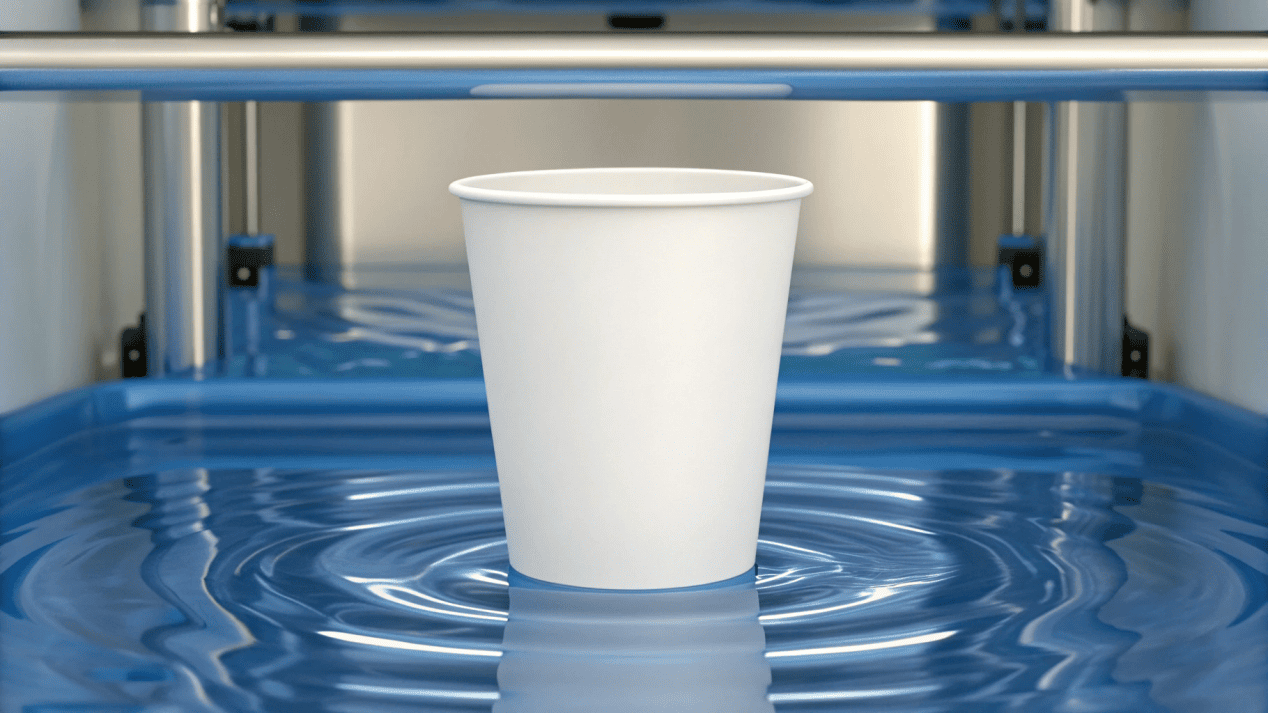
This is the problem our engineers have worked for years to solve, and we have succeeded. Our advanced water-based coatings represent a true breakthrough for the industry. Unlike PE or PLA, this coating is not a separate film that is glued on. It's designed to work with the recycling process. During the standard repulping process at any paper mill, our water-based coating simply disperses and breaks down, washing away from the valuable paper fibers. These clean fibers can then be easily recovered and made into new paper products.
This isn't a theoretical "recyclable if" solution. It's a practical solution that works with the existing recycling infrastructure that is available today. This allows your business to offer a cup that is genuinely "plastic-free" and truly recyclable in the standard paper waste stream. Best of all, this innovative solution provides the same excellent waterproofing and grease resistance as traditional cups, so there is no compromise on performance. It’s the answer we’ve all been waiting for.
Conclusion
Your cup's coating is a critical choice, not a small detail. Don't let a hidden plastic layer undermine your brand's green promises. Embrace the truly recyclable solution for a sustainable future.
